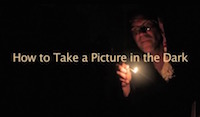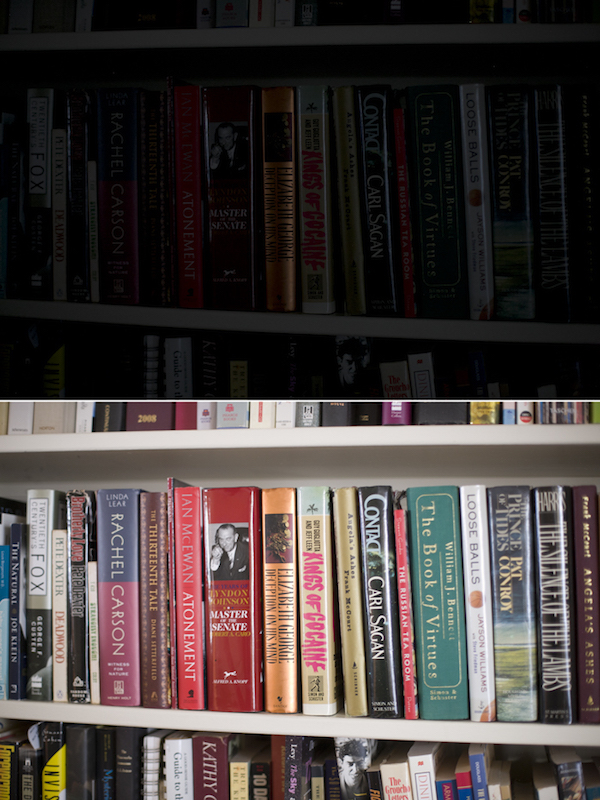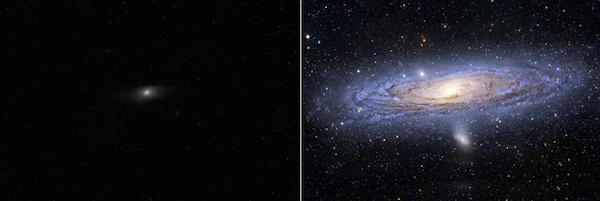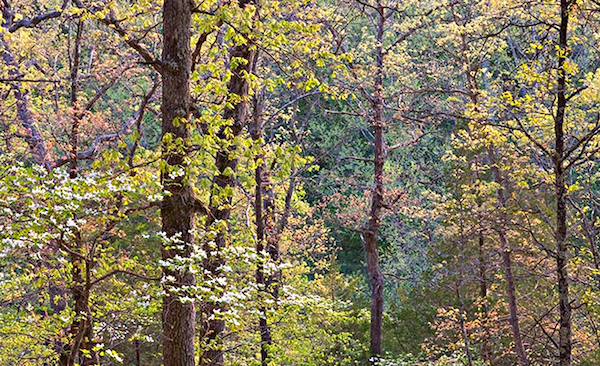How to take photos in the dark
posted Sunday, March 29, 2015 at 1:36 PM EDT

This may not be the most educational photo tip I’ll do this year, but I’ll be proud of myself if I come up with anything more fun. It’s one part science fair project, one part after-dinner parlor trick, and one part miracle. This is really astounding. I hope all of you do this and I hope you bring a kid along. It’s really unforgettable.
You’re going to take a picture in the dark and I do mean dark like you can barely see your hands in front of your face dark. I mean pretty darn dark. So this is going to happen at night.
The equipment requirement is minimal.
You’re going to need a charge-coupled device for this demonstration. Fortunately, for the success of this low-budget project you already own one! It’s in your camera and and that’s a great place for it. (Gotcha, didn’t I?)

The charge-couple device (CCD) is the thing in a camera that put Kodak out of business—it took the place of film. Don’t ask me how it does it, but a CCD has the ability to gather and save light. The more light you pour on it the brighter the picture gets. In other words, the longer your shutter speed, the brighter your picture.
In this experiment we’re going to take this wonderful trait to the extreme. We’re going to use a shutter speed that’s probably longer than most of you have ever used before. In fact, figuring out how to set your camera for a 30 second exposure (not a 30th of a second, but 30 SECONDS) may be the biggest snag many of you will hit.
If you own a tripod this is a good time to get it out, but don’t go buy one just for this. You can set your camera on a table or a shelf and it will serve the same purpose.

Please be forewarned that you will be operating in near darkness here so there is a chance that you could bump the camera and make it crash to the floor. Speaking of floors, you could set the camera on the floor in the first place and it will function just as well. Please don’t kick your camera.
Here are the camera settings:
- Put the exposure and focus on manual setting.
- Start with a 30 second exposure.
- Use the largest aperture you have. F2.8 is nice. F2 is better. Whatever you’re largest aperture is, use it.
- Crank your ISO up as high as it will go. Don’t worry about the digital noise you might get at a high ISO setting. (We’re not painting the Sistine Chapel here; we’re trying to impress kids and dinner guests.)
Choose the place where your camera is going to go. You can do this with the lights on. A tripod is best, but as I said, a table or even the floor will work.
Find a colorful subject and pre-focus on it. The lights are still on. Kid’s toys are pretty good. Legos are nice. I used a book shelf in my video demo because the books are colorful. I think the most amazing part of this is that your camera will see color in the dark. That IS is a good trick.
Get comfortable with finding the shutter button in the dark. Practice with your eyes closed.
You can turn the lights off now.

Please be forewarned that you will need a little tiny bit of light in the room. Most rooms in my house at night have some minor light source. There’s either a street light outside or a light on from a stereo or a night light or something. My point is that it can’t be completely pitch-black, coal-mine-with-the-lights-off dark. There needs to be a tad of light and then the camera will work its magic.
If you really do want to impress folks after the dinner party, do some test exposures in advance. Good show business requires at least a little rehearsal and this is good show business if done properly.
And just to make sure we give credit where credit is due, the charge-coupled device was invented in 1969 at the AT&T labs by Williard Boyle and George E. Smith.
(An exceptional educator and a world-class photographer, Nick Kelsh is the founder of How To Photograph Your Life, an excellent source of affordable photography training and tips. Nick's courses can be conducted by yourself in your own time, or with feedback from Nick and your fellow students. If you appreciated this article and want to improve your photography, visit How to Photograph your Life and sign up for a course today!)